Modern soldier by vocation. Development of surveillance and protection
Thermal imaging
Thermal imaging technology, in fact, allows you to determine the temperature difference between objects, warmer objects differ from colder ones, each has its own characteristic signs, depending on many conditions and circumstances. Unlike brightness enhancement technology, thermal imaging does not rely on any external light sources and is capable of detecting objects that emit heat through foliage, smoke, and even inside buildings. Modern digital thermal imagers allow you to quickly process, transmit and use information. Thermal imaging devices are generally larger than their electron-optical counterparts, most of which are either manual or mounted on weapon.
Since thermal imaging uses a digital environment, it is quite possible to see the image not only directly on the display of the device, but also remotely at any distance. This makes it possible to display the image on a helmet carried by a soldier, on which he sees what the weapon is aimed at, while there is no need to look in the same direction. This allows you to fire literally from around the corner. A soldier can direct his weapon from behind a wall or corner, see a target and fire a shot at it without exposing himself to unnecessary risk.
In order to demonstrate these capabilities, one of the very first systems was included in the French infantry equipment FELIN (Fantassin a Equipement et Liaisons Integres - infantryman's integrated equipment and communications) developed by Safran Electronics & Defense. Through a cable, it connects the thermal imaging sight on the FAMAS rifle to the optical device on the helmet. These systems were supplied to French soldiers in Afghanistan in 2011. Field test results were inconsistent: although the performance was satisfactory, the total mass of the rifle with the scope was deemed too large. This reminded again of the common problems faced by the developers of systems for "broadening the horizons" of the individual soldier. These systems often have mass, size, power consumption, complexity, and other design characteristics that are impractical in real combat conditions.
The continuous miniaturization process reduces the size and weight of thermal imaging devices. Safran's latest SWORD Light rifle thermal imaging sight, designed for use in urban areas, weighs 0,86 kg, has a night channel with a wide field of view and low magnification, digital zoom, built-in remote control, and optionally a collimator sight can be integrated. The duration of the device from four standard AA batteries is 8 hours.
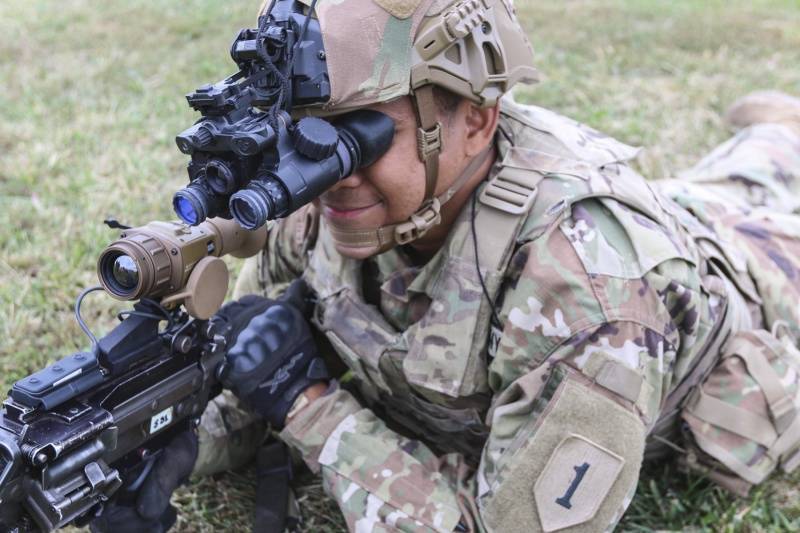
The development of the Family of Weapon Sights (FWS) family of weapon sights for the American army takes the gun sight to a new level of compactness and integration (photo above). FWS-I (Individual) wirelessly transmits the crosshair of the sight and the thermal image to the Enhanced Night Vision Goggle (ENVG) III and ENVG-Binocular, providing the above in the first part (Modern soldier by vocation. Technological advances to help light infantry) RTA functionality (according to some reports, it can reduce the time it takes to capture targets by 50%). The army sees the RTA as "an element that provides a new level of tactical capabilities that allows soldiers to detect, recognize and accurately capture targets from any position." Following the results of the competition, Leonardo DRS and BAE Systems were selected; The first serial contract was issued by BAE in March 2018 for the production of ENVG and FWS-I systems.
Day / Night Sights
Although the thermal imager is excellent at detecting objects, its recognition and identification capabilities are limited, it is difficult to use it to determine the properties of the observed object, whether it is a foreign, military or civilian. In this case, the optics for visual observation remains the preferred one. One of the solutions is the inclusion of day and night channels in a single installation system. Safran's SWORD T&D scope uses a similar design. It combines uncooled thermal imaging and daytime optics. This new generation digital sight improves observation or near and long range fire. Additional options include remote weapon control and data and video channels. It is compatible not only with rifles, but also machine guns and infantry support weapons, such as the Saab Carl Gustav grenade launcher.
Significantly increase the level of ownership of the situation allows the exclusion from equipment of devices and devices that impair the perception of the senses of the infantryman. This determines the limited use by soldiers of the NVD of the binocular type. When worn, the soldier completely loses his usual visibility. Many see the small helmet-mounted display as their preferred solution. Collins Aerospace's MV35XC display can display images from any remote composite and RGB device. With him, a soldier can not only gain instant access to video sights, but also to computers, maps, GPS and other data. A small display allows the owner to own information about the environment and at the same time it can be lifted up or moved to the side to get a completely free view or use a gun sight.
Small eye in the sky
A new direction in the development of the infantry squad arose with the advent of small enough unmanned aerial vehicles that easily fit in the palm of your hand. These micro- and nano-UAVs have the potential to significantly expand the field of view of even the smallest dismounted unit. They are compact and light enough to be carried by a soldier, easy to use due to autonomous control, able to fly for a short time, providing real-time video recording of the area of interest. One of the very first was the Black Hornet model from FLIR Systems. This nano-UAV is operated by the armed forces of the USA, France, Great Britain, Germany, Australia, Norway, the Netherlands and India. The whole complex bears the designation Personal Reconnaissance System (PRS), it consists of two drone Black Hornet, Docking/Charging Station (Battery Operated), Handheld Touch Controller and Display. Each unit weighs less than 45 grams and is 178 mm long. The Black Hornet can stay in the air for up to 25 minutes and has a radio channel with a range of about 2000 meters within line of sight. Each drone is equipped with two daytime video cameras and a thermal imager and has the function of combining these three streams to obtain a high-fidelity image. The operator can steer manually or use semi-autonomous operation to follow pre-programmed GPS coordinates and return on program or on demand. If the control signal is lost, the Black Hornet drone will automatically return to the take-off point.
These nano- and micro-UAVs can fulfill a soldier’s long-standing desire - to see what's behind a hill, a forest, or a city block. Due to their accessibility to small units and their special configuration, they provide important information that can play a decisive role in the confrontation with an opponent.
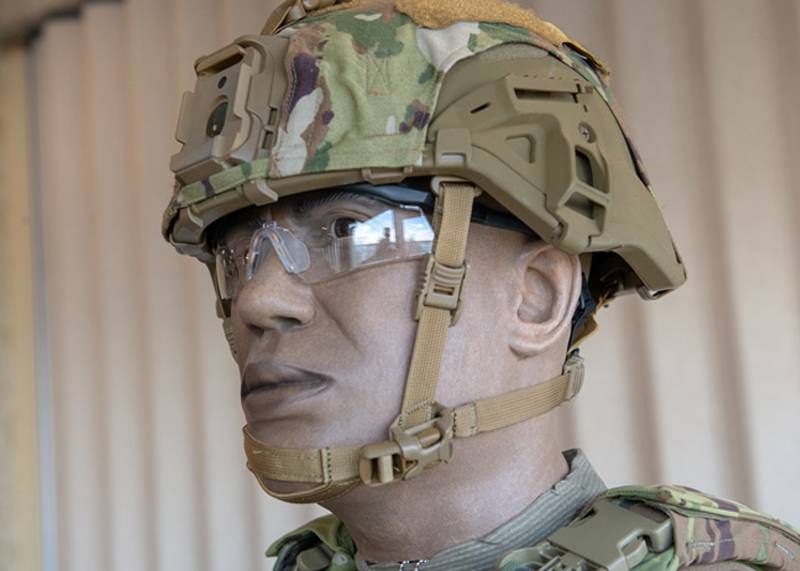
Lightweight yet durable combat vests and helmets
Bodyguard systems and helmets are being developed to give soldiers easier and more advanced protection today.
Survival of soldiers is the highest priority. This is not just a desire to reduce or eliminate losses among military personnel, but also a desire to eliminate the adverse effects that injuries or deaths have on the unit’s ability to successfully complete assigned tasks. In a small infantry unit, as a rule, from 9 to 13 people, each soldier plays a key role and his failure affects the overall cohesion and effectiveness of the team.
If we talk substantively about the protection of a soldier from a bullet or fragments from an explosion, then the best solution is, apparently, to provide him with individual body protection. At the same time, a further increase in survival looks logical by increasing the number of layers of protection and increasing the strength of its constituent elements. However, according to the representative of the Office for the Procurement of Equipment for the US Army, the reality is that "additional body protection can limit the movements and actions of a soldier, while adding weight also impairs mobility and endurance."
Weight reduction is also a factor that can increase survival due to the fact that the soldier in this case can move faster with greater functional mobility. According to the report of the Main Budget and Control Department on improving personal protective equipment, the Marines in Iraq and Afghanistan carried an average of 53 kg, which is significantly more than the standard load on the march of 32,6 kg. As a result, a delayed reaction upon contact and a decrease in fatigue resistance in a combat situation.
One of the designers of the body arm protection noted that the soldier’s experience at the forefront has a major influence on the trends in the choice of body arm configuration. Studies have shown that due to the predominance of counterinsurgency operations in recent years, more attention has been paid to bullet protection. This led to what ballistics experts call the minimalist approach to body protection - lighter vests that offer better mobility, but usually only have bulletproof or shockproof plates with little or no protective fabric. The American Army's Soldier Plate Carrier System (SPCS) unloading system reflects this trend, while the next-generation modular vest, the MSV (Modular Scalable Vest), is essentially a “one-armor plate” body protection option. Although they are certainly lighter, they also cover a smaller area than the previous army model Improved Outer Tactical Vest. The question is, how do these “minimal protection” vests prove to be in conflict with an almost equal rival, where artillery is actively used? Here, soft armored packages from Kevlar to protect against fragments can be just in topic.
It is also worth recalling that absolute protection is unattainable. For example, it is now clear that the Russians deployed sniper rifles in Syria, including the SV98 and SVD, which can penetrate even the latest bulletproof vests at virtually any distance. Therefore, it is necessary to accept the likelihood of some risk along with achieving the necessary balance.
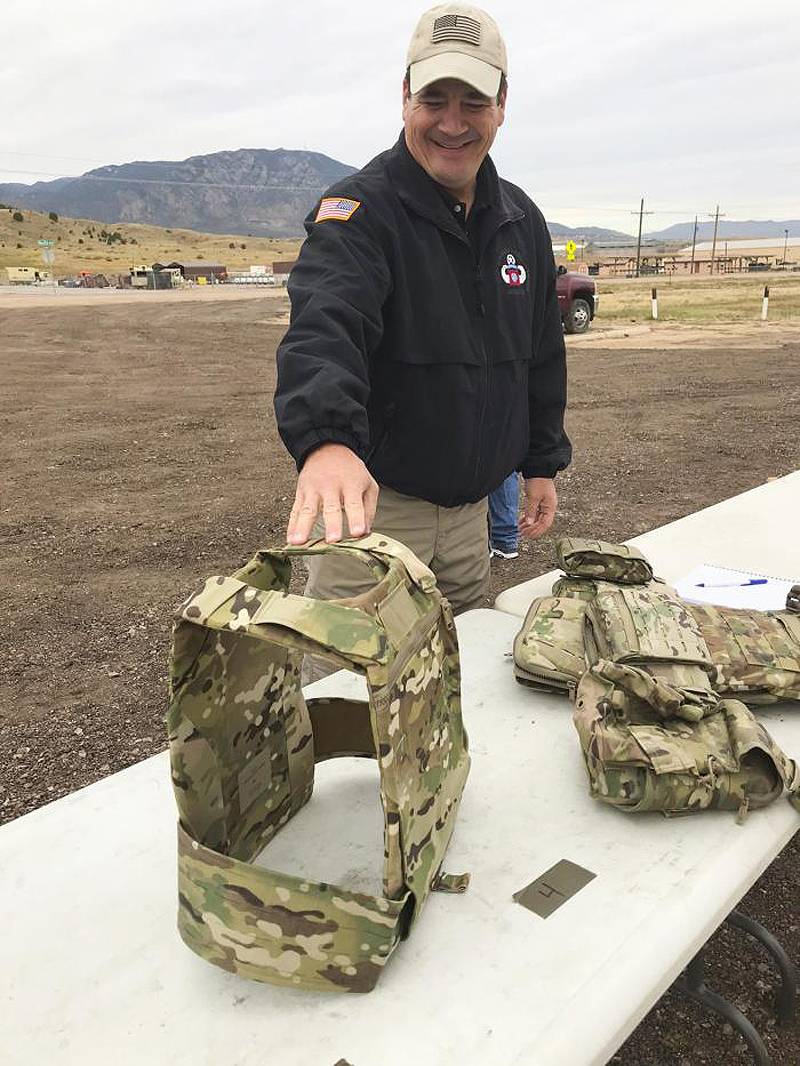
Unloading and body armor. Single family
A spokesperson for the Office noted that the US Army recognized that “a simple, personal body armor designed to be worn by all soldiers is not the best approach.” To a large extent, this “one size fits all” approach was clearly demonstrated in the earlier PASGT (Personnel Armor System for Ground Troops) personal protective equipment. SPCS and MSV systems aim to provide more adaptable underbody protection. The idea is to provide an easier alternative rather than a replacement for the Improved Outer Tactical Vest vest used in the Interceptor body protection system. The U.S. Army chose the KDH Magnum TAC-1 body armor to meet the needs of its soldiers in Afghanistan. According to the company, this "easily adaptable system with improved fit to the figure can be adjusted on the go without removing the vest using its side adjustable straps." The vest can be adjusted in real time when changing the requirements of a combat mission. It uses advanced ESAPI (Enhanced Small Arms Protective Insert) inserts weighing 5,9 kg in the largest version. Most of the protective plates in the West are made of high-strength ceramics.
The Modular Scalable Vest (MSV) was accepted for supply in 2018 to replace the IOTV (Improved Outer Tactical Vest). MSV weighs 11 kg, and when fully loaded with ballistic plates, 2,27 kg is lighter than the IOTV vest. The biggest difference is that the design of the MSV vest allows its expansion or reduction depending on the threat and the requirements of the task. The first row is soft, hidden-wearing Kevlar bags. Protective plates can be added to it, providing additional protection against shock. The next level includes an unloading vest and ballistic plates, while at the last level a “ballistic shirt with integrated neck, shoulders and pelvis protection, as well as a belt system for carrying wearable items from the vest to the hips” is added. KDH Defense Systems received the first MSV vest manufacturing contract in June 2013.
The latest shipping system for the United States Marine Corps allows for more efficient weight distribution so that every infantryman can adjust it to the needs of a combat mission. It includes the main vest in the style of a wide scarf belt with the possibility of using the protection of the groin and lower back from the body armor of the IOTV vest (Interceptor). The system features a fully integrated side protection, cable management channels and an increased number of MOLLE attachment points (Modular Lightweight Load Carrying Equipment - a lightweight modular system for carrying equipment). The new unloading vest is an alternative to the larger IMTV body armor.
In June 2019, the Corps awarded Point Blank Enterprises a contract for new light armor plates weighing about 3,8 kg. They are designed to be worn during low-intensity conflicts or in counterinsurgency tasks. The representative of the command of the U.S. ILC said that the Corps plans to begin accepting the supply of the first armor plates in early 2020.
The IOVT manufactured by KDH Defense in the U.S. Army was replaced by the Interceptor Body Armor (IBA). The company KDH Defense said that "it has been refined several times based on real reviews of military personnel from theaters of operations." The vest can use both Enhanced Small Arms Protective Insert (E-SAPI) armor plates and ESBI Side-SAPI armor plates. You can add various components to the vest, which allows you to get a complete system with protection of the inguinal region, lower back, deltoid region and neck / throat. The standard vest of the German Bundeswehr is part of his combat equipment IdZ Infanterist Modifziert (infantryman of the future). The modular vest weighing 10,5-12 kg uses SK4 armored plates and SK1 soft armored packages. Components can be added to protect the neck / throat, groin, shoulders and lower back.
The Russian combined arms bulletproof vest 6B23 uses a combination of fabric armor panels and steel armor plates, and it also includes groin protection. Newer vests 6B43 and 6B45 are lighter and have a neck section, splinterproof shoulder pads and an apron. The 6B45 modular body armor, featuring an expandable configuration like the American MSV, includes ceramic armor panels. The use of steel or titanium plates instead of ceramic has its drawback, namely that a bullet can split the plate and the resulting fragments can cause injury.
Most of the Chinese army units are equipped with body armor. In fact, China is the main exporter of body armor for commercial use and security purposes. Many of them are structurally strongly reminiscent of American and Western systems in general, including a overlapping front, side adjustment belts, detachable throat and groin guards, pockets for plates and MOLLE mounts. Chinese bulletproof inserts are made either of ballistic steel (heavier than ceramic), or (which is preferable) of ceramic based on aluminum oxide.
Combat helmets
The 6B47 Russian light combined-arms armored helmet, developed by the Armocom center, is part of the Ratnik combat gear and is produced for army units. Mounting for NVD and a side rail are built into it. The helmet is made of fabric materials based on microfilament aramid filaments, weighs 1 kg and can withstand a 9-mm pistol bullet from a distance of 5 meters. It comes with a balaclava and digital camouflage covers for vegetation and snow cover.
The F70 helmet, introduced in October 2018 by the American company 3M, was designed to meet the need for increased owner comfort while maintaining the necessary levels of ballistic protection. With a weight of 0,77 kg in the high-cut version and 0,87 kg in the medium-cut version, it is lighter than the current Combat Helmet II L110 armor helmet, but provides better protection than another Ultra-Light Weight Bump Helmet N49. Particular attention was paid to reducing weight and stability on the head, even while running or performing other activities, including parachuting.
The U.S. Army is taking on the new Integrated Head Protection System (IHPS) helmet with improved blunt shock protection. This system is five percent lighter, it includes the helmet itself with the maxillofacial nozzle and passive hearing protection of organs. The first deliveries of serial products began in mid-2018 by Ceradyne (part of 3M).
The Marine Corps awarded Gentex a contract to supply an enhanced ECH (Enhanced Combat Helmet) combat helmet, which every Marine should receive. The ESN helmet weighs as much as the standard Advanced Combat Helmet helmet, but is able to withstand the impact of a rifle bullet and fragments.
The ESN system consists of a ballistic helmet, soft pad and four mounts. In addition, it includes a double-sided helmet cover, a holder for a night vision device and mounts for various accessories.
The U.S. ILC announced in June 2019 that it wants a new lightweight and integrated helmet. This helmet Integrated Helmet System (IHS) will improve the integration of several current and future head-mounted systems, for example, optics and devices for the improvement / protection of hearing. A small helmet will weigh 1,31 kg and a largest helmet 1,74 kg. The helmet must be optimized in such a way as to transfer energy / data to the attached accessories while minimizing the size.
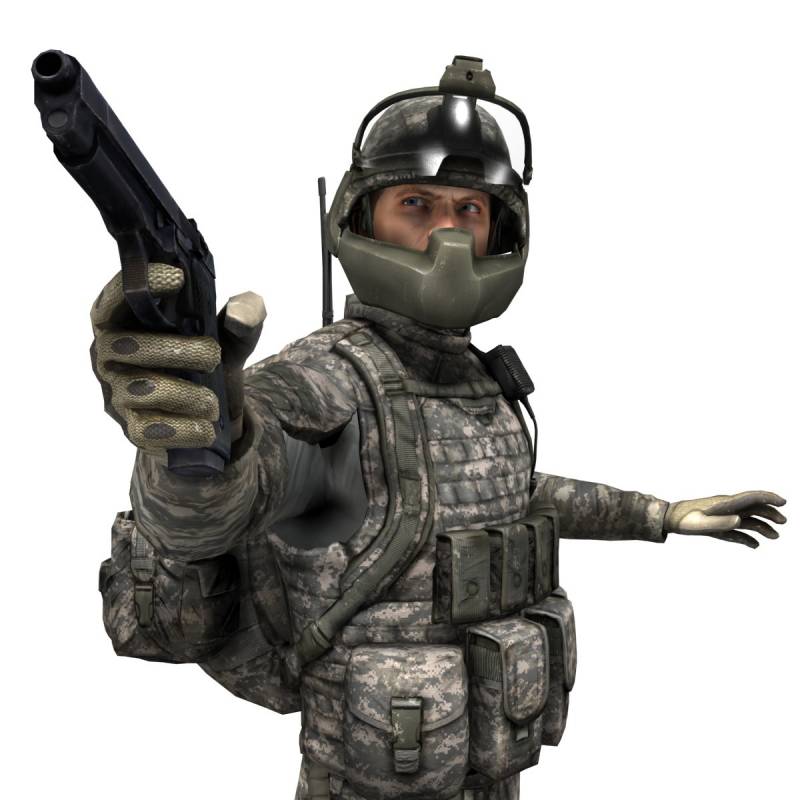
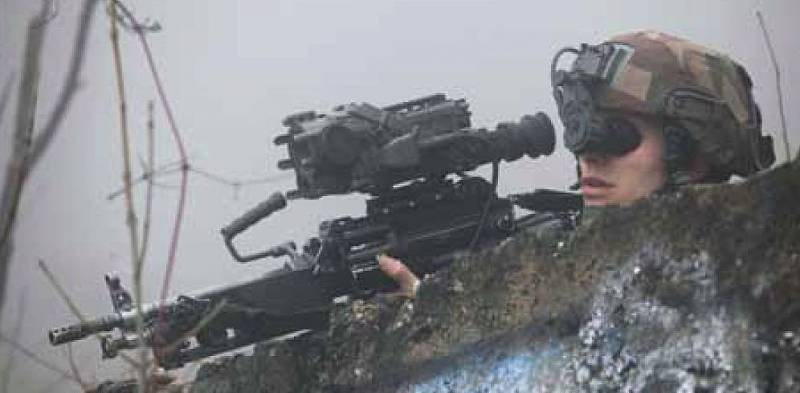
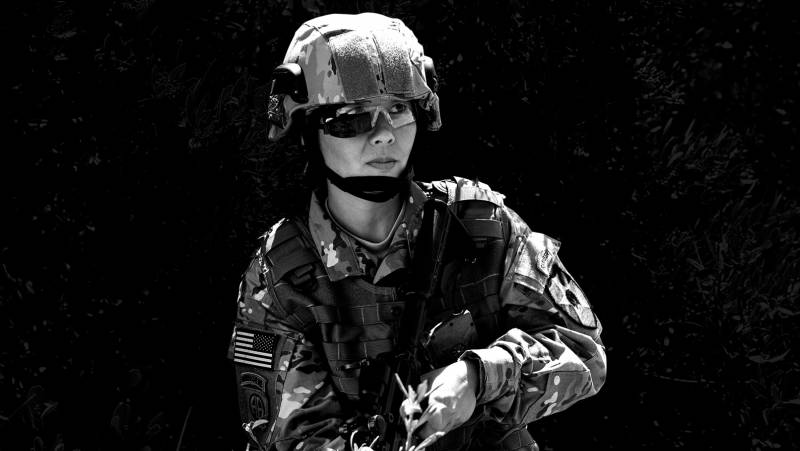
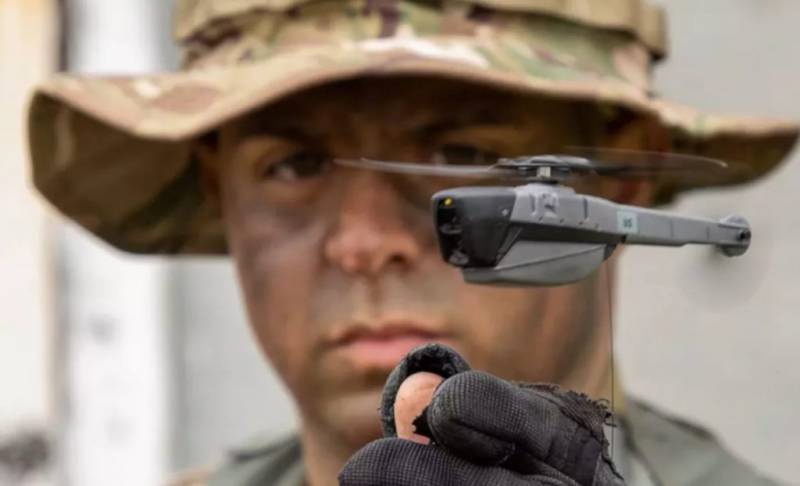
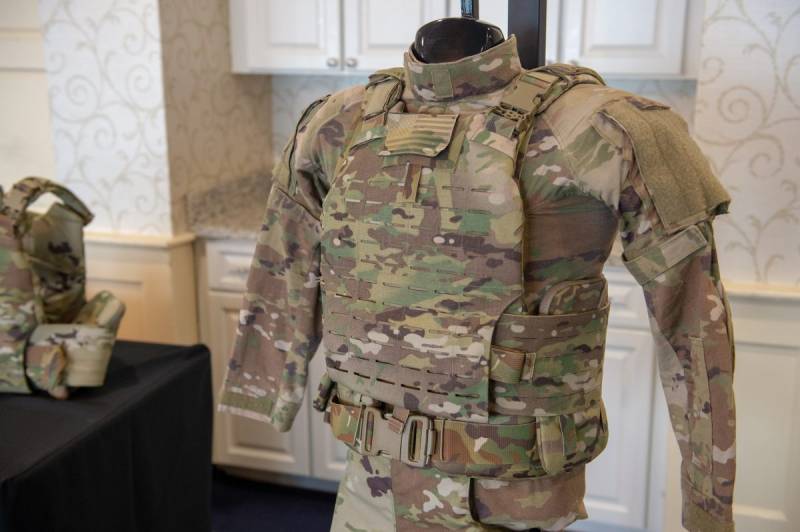
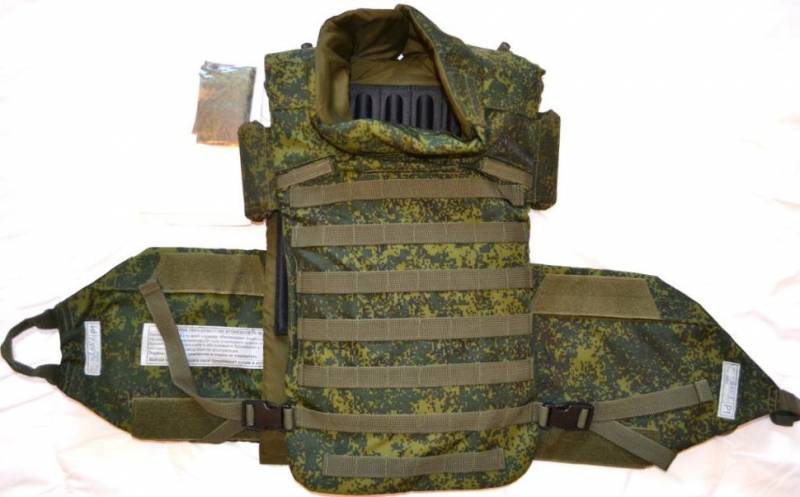
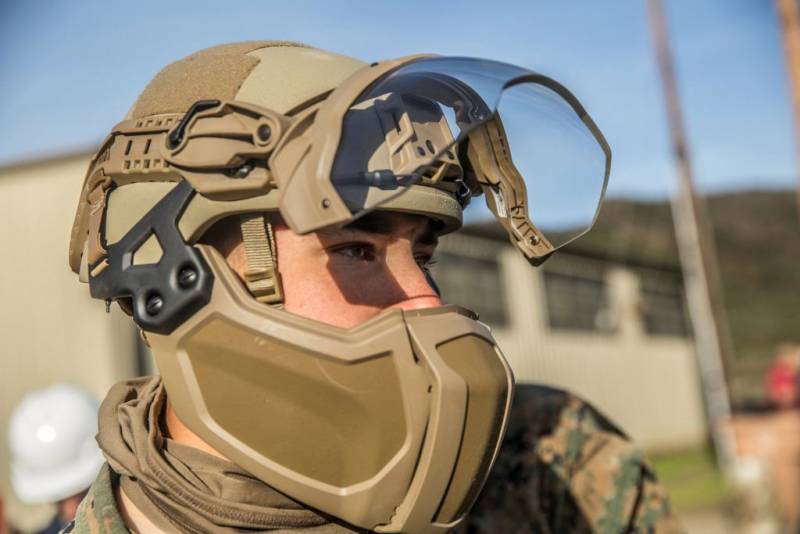
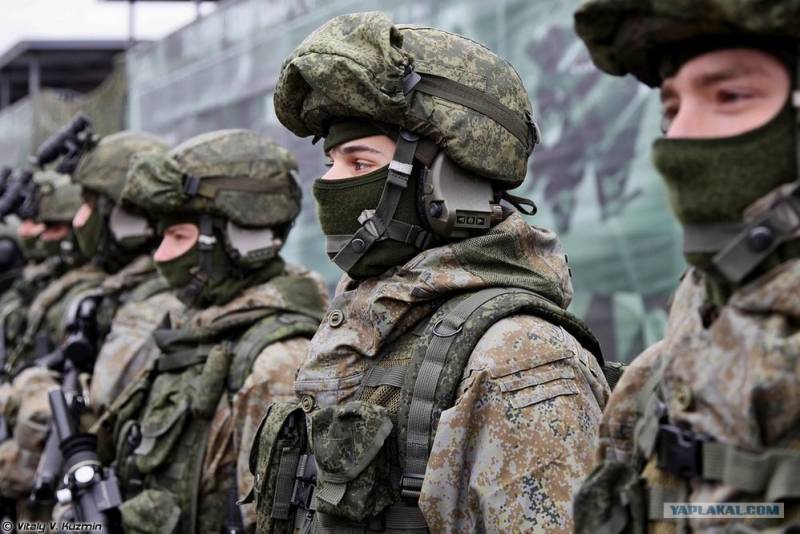
Information